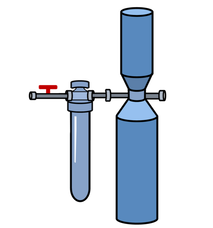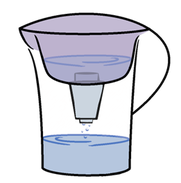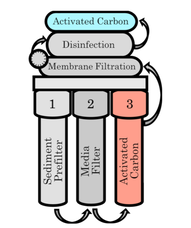Why Activated Carbon is The Most Used Technology in Water Treatment
|
About Activated Carbon
Activated Carbon (AC) is perhaps the most universally used technology, primarily used to remove organic chemicals. The filters act as an adsorbent to remove or reduce levels of water contaminants that affect the taste and odor of water, as well as harmful solvents, pesticides, and hazardous chemical wastes. They can also reduce radioactive compounds, chlorine, disinfection by-products, and lead. However, activated carbon does not remove harmful microbes. |
Certified Treatment Devices Click here to search for water treatment devices that have been certified to NSF/ANSI standards. Certification ensures that the device is made from safe materials and the contaminant reduction claims listed on the packaging are verified by independent lab testing. |
Examples of Activated Carbon Treatment Devices
|
Benefits
|
Limitations
|







